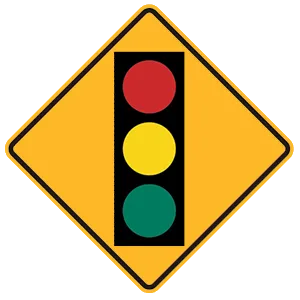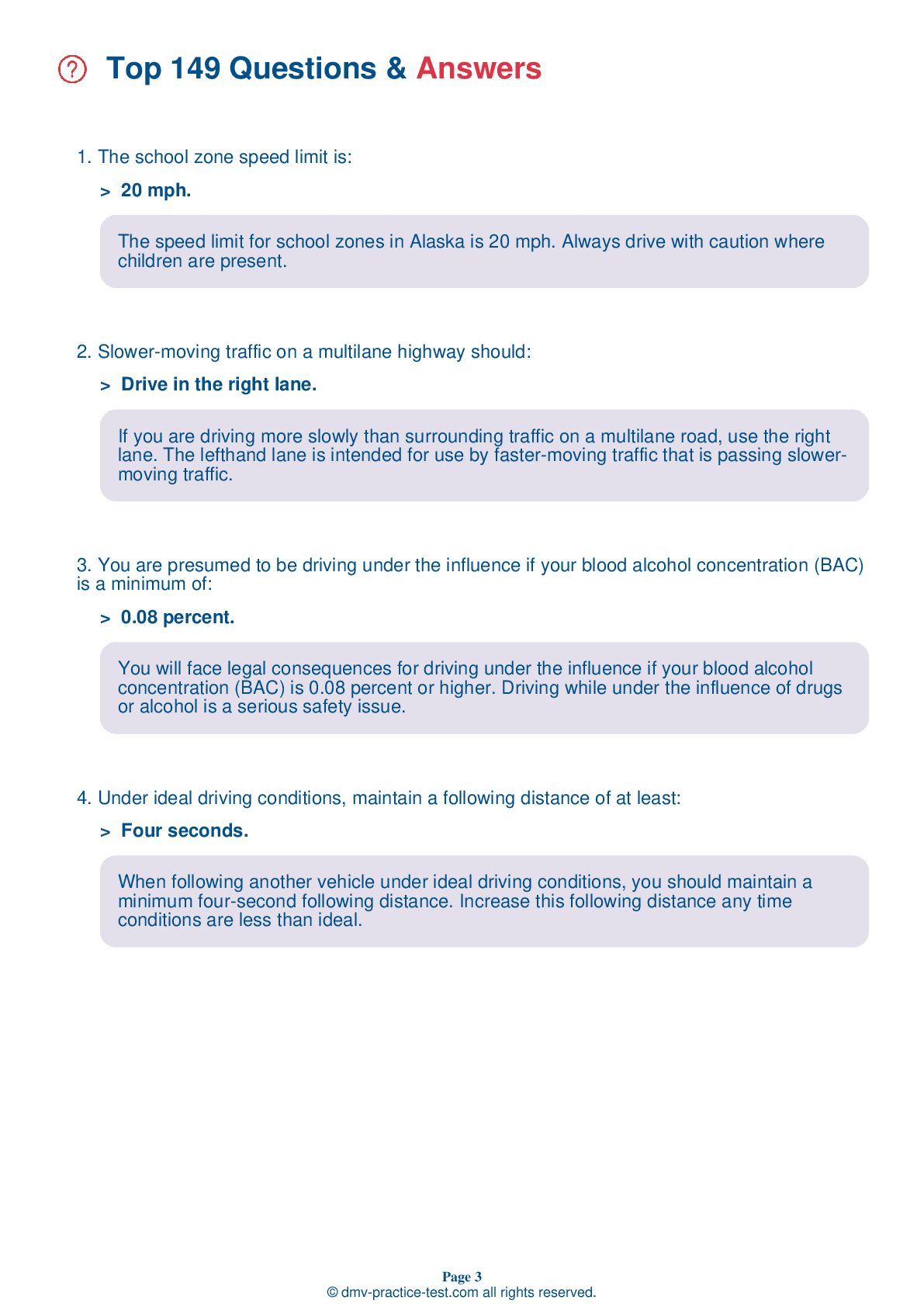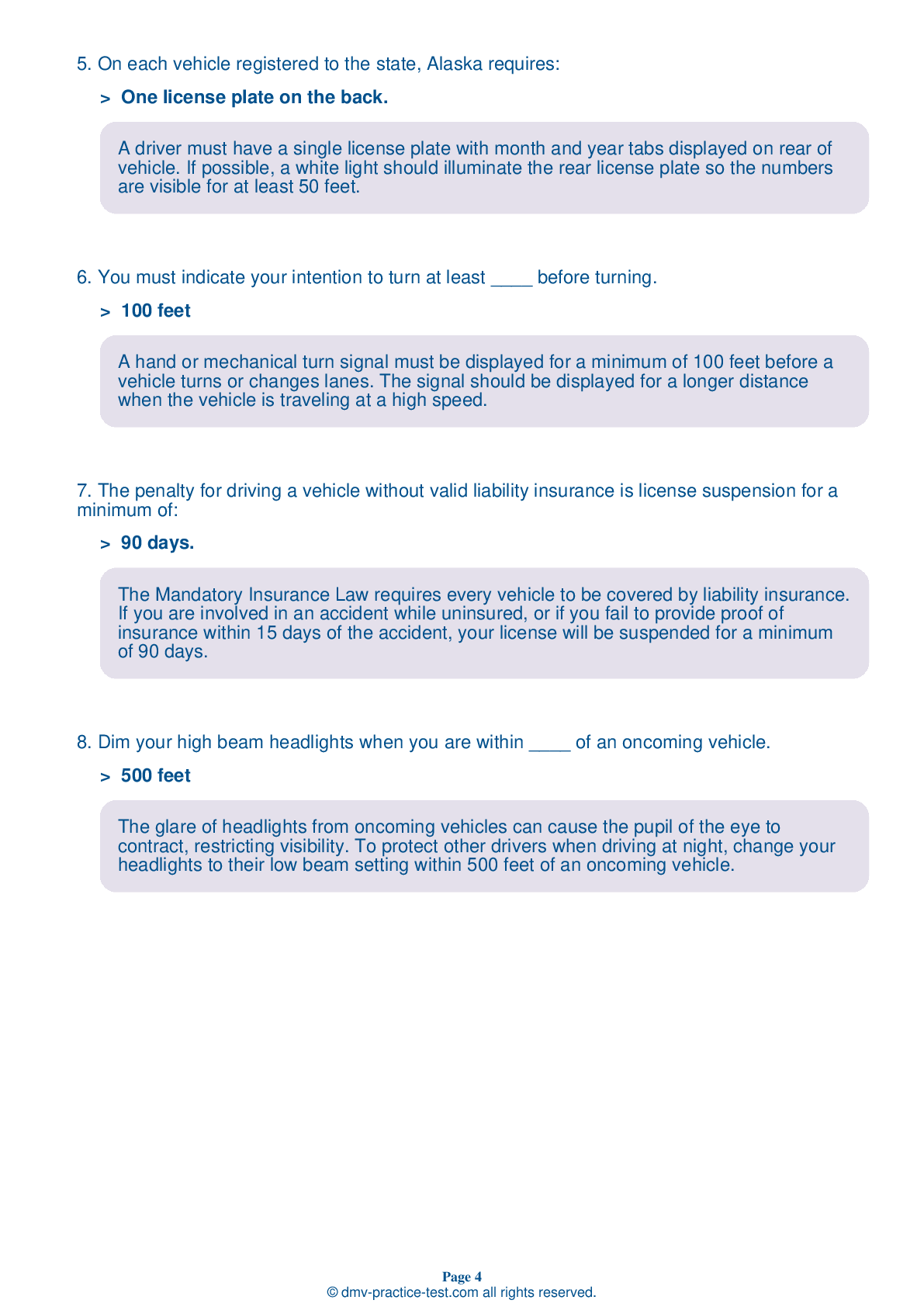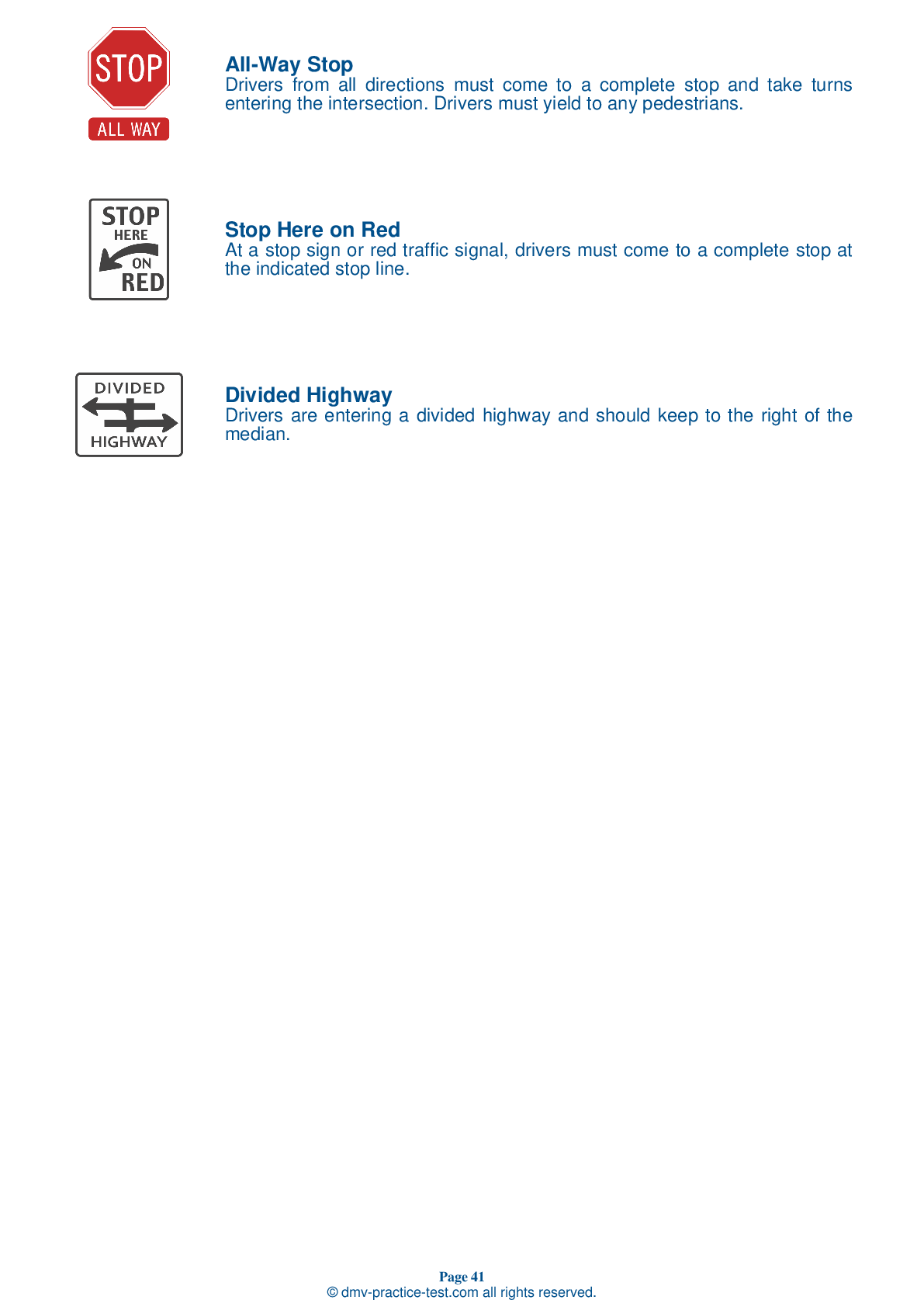FREE Alaska DMV Practice Test #2
This Alaska DMV practise tests has just been updated for January 2025. It contains questions based on the most essential traffic signs and limitations from the Alaska Driver Handbook for 2025. Use actual questions that are very close (often identical!) to the DMV driving permit test and driver's licence exam to prepare for the DMV driving permit test and driver's licence exam.
To help you recall the topics, each practise test question includes a suggestion and explanation. The written component of the official DMV test will include questions about road rules, traffic signs, and driving statutes, as well as information from the Driver Handbook.
To get the required passing mark, you must correctly answer 16 out of 20 questions. Take our DMV practise exam to help you prepare for your Alaska instruction permit or driver's licence.
The DMV exam is available in multiple languages.
Using any form of testing aid will result in an automatic failure, and the DMV may take further action against your driver's licence, so don't do it.
1 . To safely drive after drinking alcohol, you should:
After drinking alcohol, there is nothing you can do to speed up the process of the alcohol leaving your body. Black coffee, fresh air, food, or a cold shower might wake you up, but they won’t sober you up. Only time will eliminate the effects of alcohol.
2 . This sign means:

This sign indicates that there is a traffic signal ahead.
3 . Which of the following statements is not true?
Driving at high speeds results in tire wear and poor gasoline mileage. Vary your speed from time to time to prevent monotony and road hypnosis. You are not required to drive at the maximum speed limit. However, you should not drive so slowly that you interrupt the flow of traffic.
4 . A dashed yellow line on a roadway indicates:
If you are driving next to a dashed line, passing over the line is permitted from your lane if the way is clear. Yellow lines indicate lanes of traffic moving in opposite directions.
5 . If another driver cuts you off in traffic, you should:
To avoid the dangers of road rage, you should never take it personally if another driver cuts you off in traffic. Just let it go and continue driving safely.
6 . Under ideal driving conditions, maintain a following distance of at least:
When following another vehicle under ideal driving conditions, you should maintain a minimum four-second following distance. Increase this following distance any time conditions are less than ideal.
See the exact questions that will be on the 2025 Alaska DMV exam.
99.2% of people who use the cheat sheet pass the FIRST TIME
LT gives us an insight on how the cheat sheet provided her with all the study questions she needed before taking her test.
Joe initially studied with the handbook and failed his test, he eventually found us online, studied and pass his test the first time around.



